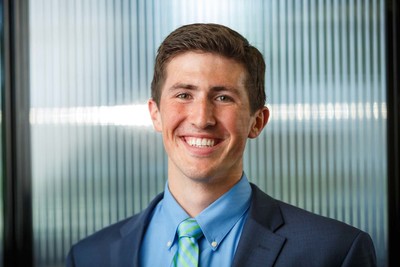 Christopher Cali ESTEEM '15
Christopher Cali ESTEEM '15
Recently I had the opportunity to sit down with Christopher Cali from the ESTEEM program to learn more about his work on developing new diagnostic tools for breast cancer. Mr. Cali graduated from Notre Dame in May of 2014 from the Science Business program. A former captain of the Irish Guard, the ceremonial marching unit which leads the Notre Dame Band, and a current tour guide coordinator for the Eck Visitors Center, he plans to take his leadership skills to utilize "business and entrepreneurship to make a positive impact in the world."
- What are the problems surrounding your thesis project and how does your team plan on solving them?
My thesis project is a multidisciplinary project based on the technology developed by two Notre Dame Biomolecular Engineering faculty members and one from the Harper Cancer Research Institute. Our technology combines the process of immunohistochemistry, the platform of microfluidics, and the use of multiphoton microscopy to construct a 3D image of a patient's tumor morphology while maintaining the structural integrity of the biopsy. By doing so, our image takes into account the spatial orientation of relevant biomarkers on which physicians can make proper diagnoses and prescribe more personalized targeted therapies. Our first target market will be breast cancer diagnostics.
- How and why did you get involved in your particular project?
My undergraduate science classes focused on cellular biology, and I have always had an interest in cancer research. I heard about this project through the ESTEEM program, and fell in love with the vision, goals, and enthusiasm of the inventors.
- What part do you play in your project outside of your academic work?
Through the opportunities that have presented themselves in the ESTEEM program, I have been able to speak with breast cancer survivors to understand their survival trajectory and how people like them may potentially be affected by our project. Although the science and engineering that we are doing is fascinating, it is incredible to know who we are affecting and how we are affecting them. This allows my thesis project to be fueled by the passion to learn, but also the fact that I am inspired to contribute to a community in need.
- What has been your favorite part about your work?
Besides developing the business model, plan to commercialization, and parsing relevant market research for the market entry, I am responsible for making the microfluidic chips that serve as the platform on which the immunohistochemistry is done.